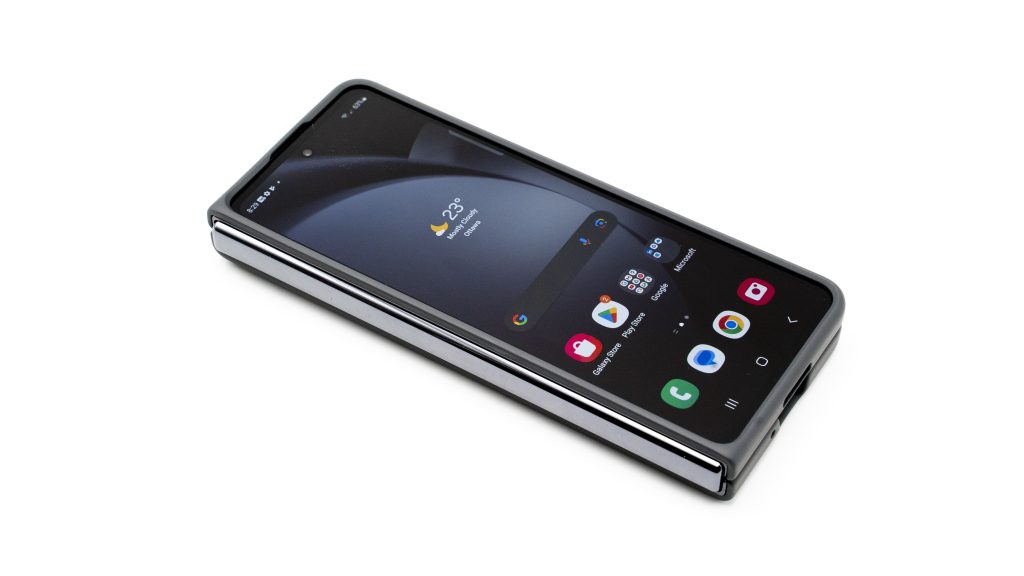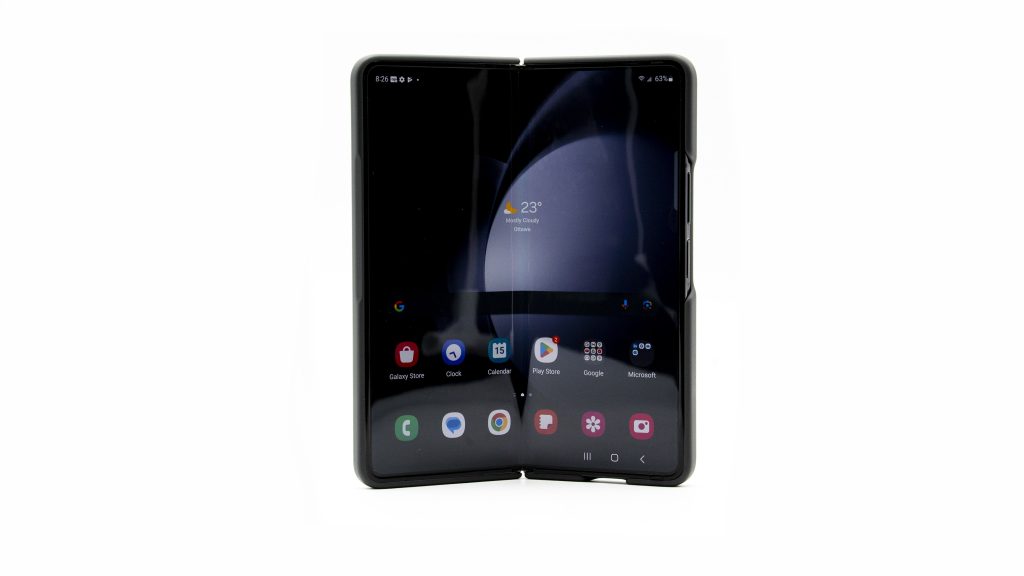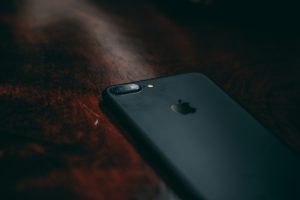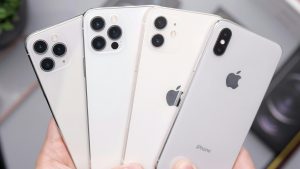The Pros and Cons of Foldable Mobile Phones: In-depth Reviews and Analysis

Foldable mobile phones have revolutionized the smartphone market, offering users the versatility of a compact device with a larger screen when needed. This innovation has its roots in the concept of foldable displays, which have been in development for several years. The idea of foldable phones dates back to the early 2000s when flip phones were popular. However, it was not until recent years that technological advancements allowed for the production of commercially viable foldable devices.
Foldable mobile phones boast larger screens, providing an immersive viewing experience that surpasses traditional smartphones. The aspect ratio of these devices allows for an extended real estate, perfect for multitasking and content creation. In addition, many foldable phones come equipped with an outer display, enabling quick access to notifications and basic functionalities without the need for unfolding the device.
On the downside, foldable phones often come with a higher price tag compared to their non-foldable counterparts. Additionally, durability remains a concern, as the folding mechanism and delicate foldable screens require careful handling and may be more prone to damage. However, with continuous improvement in design, software experience, and build quality, foldable mobile phones are emerging as an exciting option for those seeking a blend of portability and extended screen real estate.
Pros of Foldable Mobile Phones
Foldable mobile phones and iPhones have gained significant popularity in recent years, offering a unique and innovative approach to smartphone design. These devices come with a host of advantages that cater to the needs of modern users. From larger screens and improved multitasking capabilities to the convenience of an outer display, foldable phones offer a range of pros that enhance the user experience. Let’s delve deeper into these advantages and explore why foldable mobile phones are worth considering.
Enhanced Portability and Convenience
One of the key advantages of foldable mobile phones is the enhanced portability and convenience they offer. With their foldable design, these phones have the ability to easily fold and fit into smaller spaces, making them perfect for on-the-go individuals. Whether it’s slipping into a pocket or a small bag, foldable phones provide a compact and convenient solution for those who prioritize portability.
Furthermore, the ease of carrying and handling a foldable phone is another major benefit. The slim and lightweight design of these devices makes them comfortable to hold and effortless to carry. Gone are the days of bulky smartphones weighing down your pockets or bags. With a foldable phone, you can enjoy the convenience of a larger screen when needed, and simply fold it up and put it away when you’re done.
Not only does this compact design make foldable phones highly portable, but it also brings added convenience to your daily life. Whether you’re on a crowded bus or rushing to catch a flight, the ability to quickly fold and unfold your phone allows for seamless multitasking and efficient usage. You can easily switch between various apps and tasks without compromising on screen size or compromising your comfort.
Larger Screen Size and Improved Multitasking
One of the biggest advantages of foldable phones is the larger screen size they offer. When unfolded, these devices provide a significantly bigger display compared to traditional smartphones. This expanded screen real estate allows for a more immersive multimedia experience, whether you’re watching movies, playing games, or browsing the web. The larger display also enhances productivity by allowing for more content to be comfortably displayed at once. You can view more emails, documents, or social media feeds without constantly needing to scroll or zoom in. This makes tasks like reading, editing, and multitasking much more efficient.
Foldable phones also excel at multitasking thanks to their larger displays. With the ability to run multiple apps simultaneously, you can stay productive and streamline your workflow. For example, you can have a spreadsheet open on one half of the screen while video chatting or browsing the internet on the other half. This enhanced multitasking capability allows for a seamless and efficient work or entertainment experience.
Additionally, foldable phones often come with software features specifically designed to optimize multitasking. For instance, some devices offer split-screen functionality, allowing you to run two apps side by side. This makes it easier to reference information or transfer content between apps without constantly switching back and forth.
Innovative and Futuristic Design
One of the most notable benefits of foldable phones is their unique and eye-catching form factor. These devices symbolize technological advancement and push the boundaries of traditional smartphone design. Unlike conventional smartphones, foldable phones offer a truly innovative and futuristic design that captivates the imagination.
By seamlessly folding open and closed, foldable phones provide a mesmerizing transformation that is both practical and visually appealing. This cutting-edge design not only attracts attention but also offers practical benefits. The ability to fold the device allows for a more compact and portable form factor, making it easier to carry and store compared to larger devices.
Furthermore, the foldable design opens up new possibilities for how we interact with our mobile devices. The flexible displays enable unique usage scenarios, such as utilizing the outer display for quick access to notifications and basic tasks, while the larger inner display provides a more immersive experience for multimedia consumption and productivity.
Improved Durability and Longevity
One of the key advantages of foldable phones is their sturdier construction and use of high-quality materials, enhancing their durability and longevity. Unlike traditional smartphones, which are prone to damage and wear, foldable phones are designed to withstand the rigors of daily use.
The use of robust materials like durable glass and advanced polymers ensures that the foldable screens are less susceptible to scratches and cracks. Additionally, the hinges and mechanisms that enable the folding feature are engineered with precision and built to last. This means that users can enjoy their foldable phones for longer without worrying about frequent repairs or replacements.
The improved durability of foldable phones also translates to greater resistance to external elements such as dust and water. Many foldable phones come with an IP rating, indicating that they are water and dust resistant. This added protection further enhances the device’s longevity and allows users to confidently use their phones in various environments without fear of damage.
Overall, the improved durability and longevity of foldable phones make them a practical choice for users who value a device that can withstand the test of time. With their sturdy construction and use of premium materials, these phones offer a higher level of confidence in their reliability, ensuring that users can enjoy their foldable devices for years to come.
Cons of Foldable Mobile Phones
Foldable mobile phones have brought a revolutionary change in the smartphone industry, providing users with new possibilities and enhanced functionality. However, like any technological innovation, they also come with their fair share of drawbacks.
Higher Cost and Limited Availability
One of the major drawbacks of foldable phones is their higher price tag compared to traditional smartphones. These innovative devices often come with a hefty price premium, making them inaccessible to a large portion of the market. The advanced technology and complex folding mechanisms involved in these phones contribute to their elevated cost. As a result, many consumers may find it difficult to afford a foldable phone.
In addition to the high cost, limited availability is another downside of foldable phones. Currently, the options for foldable phones in the market are relatively limited compared to traditional smartphones. Only a few manufacturers offer foldable devices, and they may not be readily available in all regions. This limited availability restricts the choices for consumers who are interested in exploring the foldable phone experience.
Considering the expensive price tags and limited availability, it is important for consumers to carefully evaluate their needs and budget before investing in a foldable phone. While these devices offer unique features and larger screens, the higher cost and limited market options can be significant barriers for many potential buyers.
Potential Issues with Durability and Reliability
One potential issue with foldable phones is their susceptibility to screen damage and hinge-related problems. The very nature of foldable displays makes them more vulnerable to scratches, cracks, and other damage compared to traditional smartphone screens. The folding mechanism also introduces an additional point of potential failure—the hinge. Over time, the constant folding and unfolding may cause wear and tear on the hinge, leading to issues such as limited flexibility or even complete hinge failure.
Another concern is the uncertainty surrounding the long-term performance and lifespan of foldable phones. Since this is a relatively new technology, there is limited data available on how these devices will hold up over extended periods of use. Questions arise regarding the durability of the folding screen, the functionality of the hinge, and the overall reliability of the device. Users may be hesitant to invest in a foldable phone without a better understanding of its long-term performance.
Bulkier and Heavier Form Factor
One of the drawbacks of foldable phones is their increased thickness and weight when folded. While these devices offer the benefit of larger screen sizes, the folding mechanism adds bulk to the device and makes it less pocket-friendly and comfortable to carry.
When folded, foldable phones can become significantly thicker compared to traditional smartphones. This makes them less ideal for users who prioritize slim and sleek designs. The added thickness can also create challenges when it comes to fitting the device into pockets or small compartments.
Additionally, the increased weight of foldable phones can make them feel cumbersome to carry around. Users may find it less convenient to hold and operate the device for extended periods of time, especially when compared to lighter and more compact smartphones. This can be a concern for individuals who prefer lightweight and portable devices.
It’s important for users to consider the bulkier and heavier form factor of foldable phones and assess if it aligns with their personal preferences and usage habits. While some may find the larger screens and added functionality worth the trade-off, others may prioritize the comfort and ease of use provided by smaller and lighter smartphones. Ultimately, the decision will depend on individual preferences and priorities.
Potential Software and Compatibility Challenges
One of the potential challenges of foldable phones is the adaptation of apps and user interfaces to the unique foldable screen design. While many smartphone manufacturers have made significant strides in optimizing their software for foldable devices, there can still be compatibility issues with certain applications and functionalities.
Not all apps are fully optimized for the folding screen, which can result in distorted graphics, poorly fitting layouts, or even app crashes. This can be frustrating for users who rely on specific apps for their day-to-day tasks or entertainment. While app developers are working to address these issues, it may take some time before all apps are seamlessly compatible with foldable screens.
Another software challenge is the user experience when transitioning between different screen modes. Some users have reported a slight lag or stutter when switching between the folded and unfolded states of their devices. Additionally, the aspect ratio of the unfolded screen may not be ideal for all apps, resulting in black bars or stretched content.
Despite these challenges, foldable phones have made significant progress in terms of software experience and app continuity. Manufacturers like Samsung have introduced features like app continuity, which allows apps to seamlessly transition from the outer display to the larger internal display when the device is unfolded.
In-depth Reviews and Analysis
Foldable mobile phones have gained a lot of attention in recent years, with several popular models hitting the market. Mobile phone reviews from users and experts have provided valuable insights into their pros and cons.
One of the standout features of foldable phones is the larger screen size when unfolded. This offers a more immersive viewing experience, making it ideal for multimedia consumption and multitasking. Additionally, the ability to fold the phone provides greater portability and convenience.
However, user feedback reveals some concerns. While the concept of foldable displays is innovative, the durability of these screens remains a point of contention. Some users reported issues with the durability of the folding mechanism and the display itself. These concerns raise questions about the long-term reliability and maintenance costs of foldable devices.
Another aspect that needs improvement is the software experience. While manufacturers have introduced features like app continuity, there are still challenges in ensuring apps fully optimize for foldable screens. Some apps may not adapt well to the different screen modes, leading to distorted graphics or app crashes. Users have also reported a slight lag when transitioning between folded and unfolded states.
Despite these challenges, the wider industry is investing in foldable technology. With advancements in manufacturing processes and software optimization, we can expect foldable phones to become more durable and reliable in the future. As app developers continue to work on optimizing their software for foldable screens, user experience is poised to improve as well.

Conclusion
In conclusion, foldable mobile phones offer the benefit of larger screen sizes when unfolded, providing an immersive multimedia experience and enhancing multitasking capabilities. The ability to fold the phone also adds portability and convenience to the user. However, concerns remain regarding the durability of foldable displays and the long-term reliability and maintenance costs of these devices. The software experience is also an area that needs improvement as app optimization for foldable screens can be challenging, leading to distorted graphics and app crashes. Despite these challenges, the industry’s investment in foldable technology and advancements in manufacturing processes and software optimization are expected to address these issues in the future, making foldable phones more durable, reliable, and user-friendly.






